
Alexander Heinle
Alex is a marketer at Zavvy. On this blog, he mainly shares insights gained from discussions with selected experts and from helping our customers set up and improve their onboarding or learning programs.

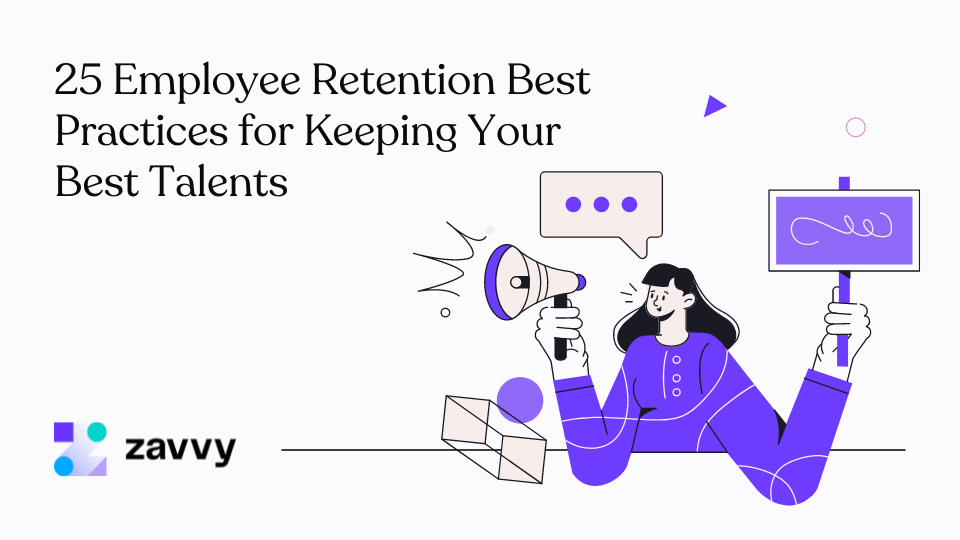
Are you seeing an increase in the number of employees quitting?
If so, you're not alone.
In fact, employee turnover is at an all-time high. As a result, companies spend considerable resources on hiring the best talent but often struggle to retain them.
Why? Because they don't have the right employee retention strategy in place.
The good news is that there are things you can do to prevent your employees from leaving.
In this article, we'll share the top employee retention best practices that you can use to keep your best talent.
Together with our curators, we have created a library of actionable digital marketing resources. Personalized to your team's needs.
Employee retention is one of the most critical tasks in any business. This is especially true now, with the COVID-19 pandemic wreaking havoc on companies and employees alike.
With the onset of the pandemic, many people have reevaluated their priorities, leading to many people quitting their jobs and considering other options. Some experienced working remotely and were hesitant to return to the office full-time. Others have left their jobs because of how their employers treated them during the pandemic.
What resulted is now known as the Great Resignation: over 19 million workers in the United States resigned between April and September 2021.
This mass resignation placed even greater emphasis on employee retention to ensure companies have a stable workforce.
But employee retention does more than just solve the turnover problems of an organization.
Let's look at five reasons why employee retention is essential.
.png)
When employees leave, it can be costly to replace them. Often, employers must spend 6 to 9 months of the employee's annual salary to find a replacement.
The costs include recruiting and training new employees to ensure maximum productivity. Aside from these, you may incur losses because employee resignations can disrupt your business operations due to a loss of productivity.
Forward-thinking companies prefer to keep their employees happy and engaged to stay with the company for a long time.
Losing good employees, especially those who work hard and contribute significantly to the company's overall success and productivity, can hurt morale. Employees who are required to cover for employees who leave and train new employees will become exhausted, frustrated, and disengaged.
This can harm your company by creating a trend of continuous quitting. According to a Linkedin survey, 60 percent of employees consider leaving when a colleague leaves.
To avoid this, you should implement effective employee retention strategies to boost their morale and create a more positive workplace atmosphere.
Employee retention creates experts within your organization. Employees who have been with the company for a long time are familiar with the company's business and operations. As a result, they are up to speed on how things are done and are typically more productive than new employees.
Companies with high employee retention rates are more likely to employ engaged workers who complete more work and are more committed to the company's success.
There is a link between customer service and employee retention: locations with the lowest turnover rates also tend to have the highest level of customer satisfaction, according to research from Medallia Institute.
After all, long-tenured employees have better technical skills, understand the business better, and thus better serve the customer base.
New employees may also be less productive than established employees, less adept at problem-solving, and more prone to making mistakes. All of these can result in a poor customer experience, jeopardizing your company's reputation.
Healthy company culture is one of the most important aspects of a successful business. It can result in increased productivity, reduced staff turnover, and a strong company and brand identity.
The more invested employees feel in a company, the less likely they are to leave. Plus, employees will often feel more engaged where there is a positive company culture.
Talent retention starts with attracting the right employees. And to attract the best talent, you must have effective employer branding and a compelling employer value proposition.
By creating a strong employee brand and value proposition, businesses can attract employees looking for companies that put their beliefs into action.
Tip: Provides growth opportunities to your employees. This will not only convince current employees to stay, but you can also brand yourself as an employer investing in its workforce and attracting new talent.
But employer branding is not enough to retain your new employees long-term.
The next crucial steps are new hire orientation and onboarding.
With orientation and onboarding, you integrate new employees into their roles. It includes relevant training and regular feedback and check-ins, which can last for months or years to assist new team members in understanding the process of an organization.
David Taylor, founder & CEO of David Taylor Law Offices, says that the secret to high retention rates is having a solid onboarding process.
"Providing thorough training is key to getting an employee accustomed to and comfortable in their new place of work. The more "at-home" they feel, the more likely they will stay long-term."
Tip: Ensure clarity on the role and organizational and individual goals.
Role clarity is essential for any new hire. Therefore, their role in the company must always be clear.
Don't leave your new hires wondering whether they are fulfilling their role correctly.
The employee's role may change in the company over time, and the need for feedback may become increasingly important.
So, how can you prioritize employee retention and ensure your best employees stay with the company?
Below, we've grouped some HR best practices for employee retention by company behaviors.
In practical terms, if a company is excellent to work in and employees are happy working there, the company is said to have a great company culture.
Therefore, it is essential that employees feel comfortable in the environment in which they work.
Shaurya Jain, the founder of Samurai Marketers, believes that company culture is very important in determining the employee retention rate:
"People leave jobs because of poor-work culture. Having micromanaging superiors, long work hours, no recognition, and poor compensation are all these factors that lead to employees quitting their jobs."
To retain your employees, you need to nurture and respect them.
When surveyed, 72% of employees rank respect as the most important factor in job satisfaction.
In an environment where employees are respected, they will be less likely to want to leave their current employer and look for alternative opportunities.
With the advent of the COVID-19 pandemic, work from home has become more of a trend.
Many employees are reluctant to return to a full-time office-based environment and are now seeking greater flexibility in their workplace.
As a result, many companies adopted a remote or a hybrid working policy where both onsite and remote work was allowed.
Tip: Make sure you offer flexible working arrangements. If flexibility is a no-go for you, communicate it clearly. Don't blind-side new hires on their first days.
Other company cultures encourage staff creativity, such as a company like Squarespace, which gives its employees two free lifetime sites to pursue their creative passions.
Although other factors affect employee retention, if a company's culture is healthy and staff feels that they can express themselves, they will enjoy working there and be less inclined to want to move elsewhere.
Employee well-being is about caring for your staff and ensuring their needs are heard and met. Well-being refers to the employee's mental, physical, emotional, and financial health.
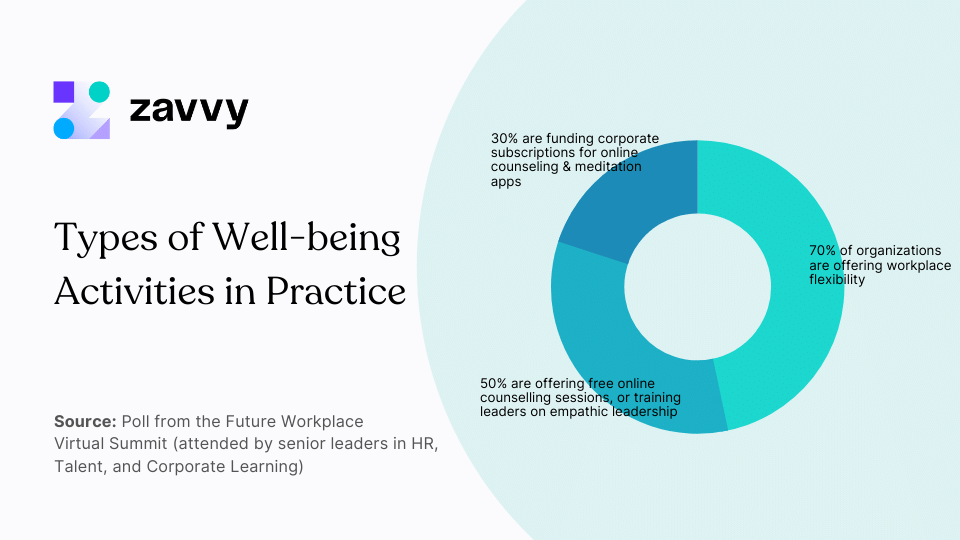
Employee burnout can result from employee well-being not being prioritized and looked after.
❗️ Studies have indicated that more than 50% of employees feel burned out.
Employees who experience burnout will not be able to perform at maximum productivity and start feeling disconnected from their workplace.
Tip: With the rise of remote working, you can still support your employees' well-being by conducting virtual wellness activities like online exercises, virtual games, group therapy sessions, and more.
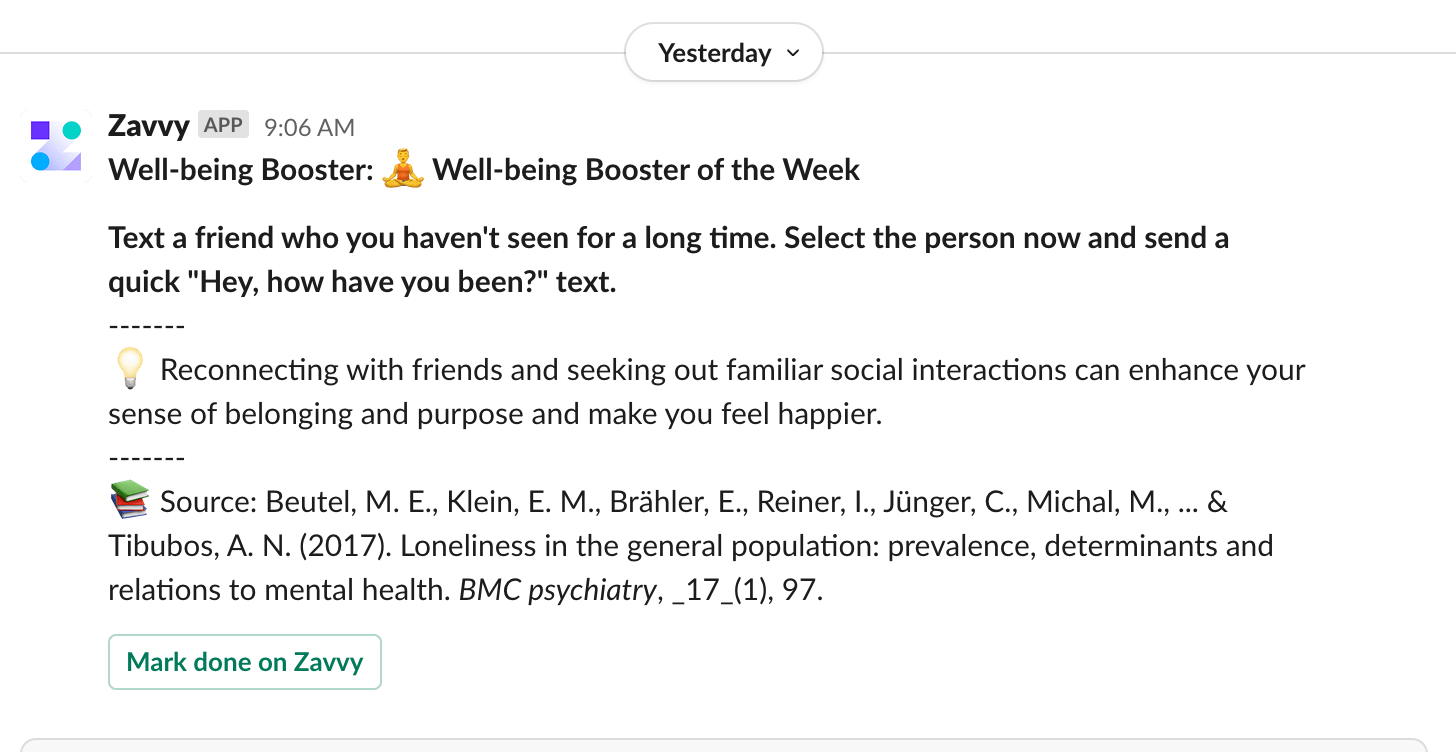
Nor prioritizing employee well-being can cause employees to move on to another company where they will feel taken care of and experience a better work-life balance.
Tip: Ensure that what you ask of your employees are reasonable tasks and that the workload is manageable.
Creating a safe and pleasant environment for your employees can greatly impact their productivity and engagement.
A comfortable temperature, a well-stocked coffee machine, and plenty of seating are all things that can go a long way in making people feel more comfortable at work.
Similarly, ensuring that your workspace is well-lit can help keep employees safe and prevent any accidents that might otherwise be caused by tiredness or distractions.
Offering good company benefits is one of the best strategies for ensuring your employees stay with you. Employees will be more inclined to stay with their current employer if your company offers good benefits.
Wages are only one of the considerations in a company benefits package. Employers can offer many other benefits, such as remote working and flexibility, health insurance, equity in the company, and additional leave days, to name a few.
Meyr Aviv, the Founder & CEO of iMoving, says that providing a competitive salary and benefits is vital for employee retention.
"Employees want to feel like they are being treated fairly and that their compensation is commensurate with their skills, experience, and effort."
Studies have shown that up to 53% of employees want more recognition from their managers.
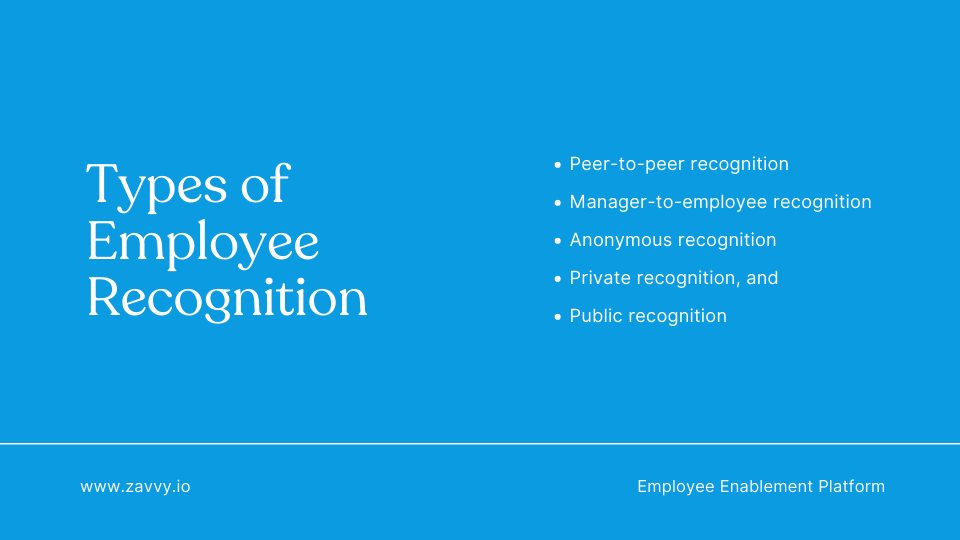
Recognition can come in various forms, such as:
If employees do not feel recognized, they may think that their growth and opportunities in a company are limited. So, they may be looking for other opportunities.
Cayla Thurman, Business Reputation Consultant, highlights that:
"Recognizing employees' contributions to the company is one of the most effective employee retention strategies. Everyone likes to feel valued, and if employees feel that the company recognizes their hard work, they'll trust the company more, strengthening their relationship with their employer."
Compensation, or the wage someone is paid, is usually the primary benefit that employees will consider whether deciding to stay in a job or consider an alternate opportunity.
The cost of living is constantly increasing, and employees can be left frustrated if their compensation does not match the value they create.
Loyal employees are not easy to come by, so you should take care of loyal employees. Incentivize loyalty, however possible.
You can incentivize employees through:
More flexibility and extra days off can also be considered additional benefits.
No employee wants to feel that they are stuck in their job and do not have a pathway to grow and develop.
An employer must create opportunities and pathways for employees to grow, develop, and advance in the organization.
Employees can advance their careers through:
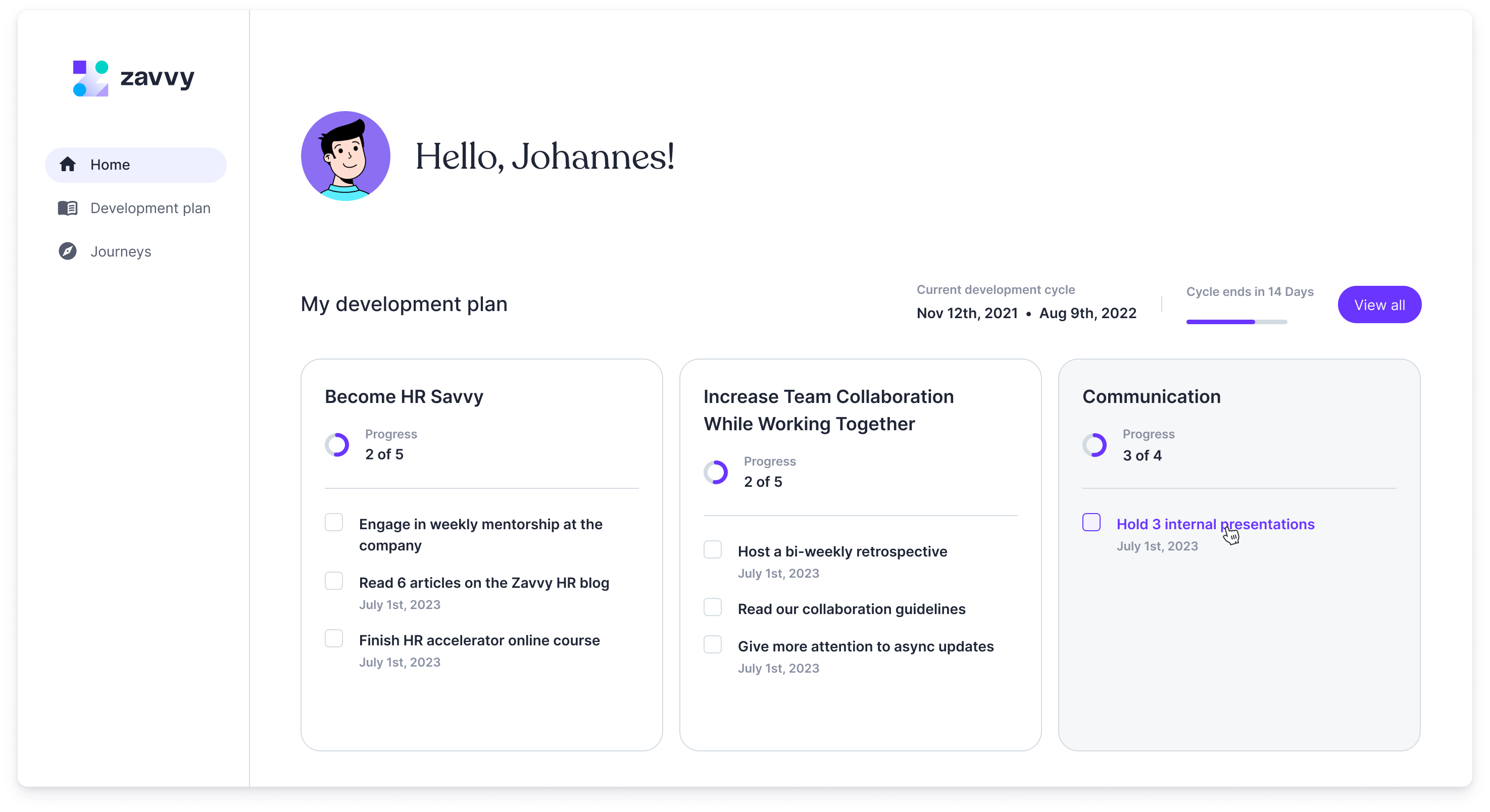
"When employees feel stuck in a dead-end job, they are more likely to look for opportunities elsewhere. However, when they feel they have a chance to advance their career within the company, they are more likely to stay put." Meyr Aviv, the Founder & CEO of iMoving.
When employers take time to invest in their employee and their career path, the employee will feel more connected to the organization.
You need to convince your employees that they have a clear career path within your organization.
Tip #1: Create a clear career progression framework showing your employees how they can grow in your organization.
Tip #2: Encourage and support your employees in creating and owning their development plans.
Investing in employees' learning and development is a win-win for both employee and employer:
Tristan Harris, Sr. Marketing Manager at Thrive Digital Marketing Agency, believes that investing in employees' careers is one of the most effective employee retention strategies:
"When employers invest in developing their workers' skills, employees would be more likely to stay in the company. In addition, providing mentorship programs, technical skills training, and spearheading educational workshops would help employees hone their skillset and be an asset to the company."
Leaders play a huge role in improving employee retention rates, primarily through engaging with their staff and helping to set the overall mood, company culture, and direction of the business.
Good leaders can motivate and inspire team members to do their best work.
Conversely, poor leaders can de-motivate employees and leave them feeling they have no clear vision or path for growth within the company.
➡️ Discover how to create an effective leadership development plan (and why you should do it asap). Sample Leadership development plan included.
There is a saying, "people don't leave jobs; they leave managers."
Don't underestimate the value of good leadership, as employees will observe what leaders do, say and how they treat other employees.
Employees need good leadership and leaders who care about them and their development. Micromanaging can take away from employees' ability to create better results for themselves.
➡️ Explore our leadership training templates gallery. You'll access real Zavvy journeys made by our learning designers, customers, and other forward-thinking companies.
As mentioned above, high turnover rates are costly for businesses.
Therefore, you need a good understanding of your company's turnover rate.
Which employees are at risk of leaving? And why?
Tip: Identify areas that need improving, and take action to reduce turnover and improve employee retention.
Determine how many of your employees are looking for a new job, how in demand they are, and how much additional compensation will entice them to jump ship.
➡️ You can investigate all of these with an employee retention survey. Discover tips and 49 sample survey questions.
Conducting an exit interview is an excellent way for an employer to get more insights into the business.
An exit interview takes place when an employee is leaving employment with a company.
Exit interviews are a valuable data collection opportunity. Employees leaving the company will be freer to speak about what they like and not in your company.
Feedback is vital in employee retention and can be considered one of the most effective strategies.
Feedback across multiple channels (360 feedback) provides a nuanced picture that can help all parties involved - leaders, employees, and HR.
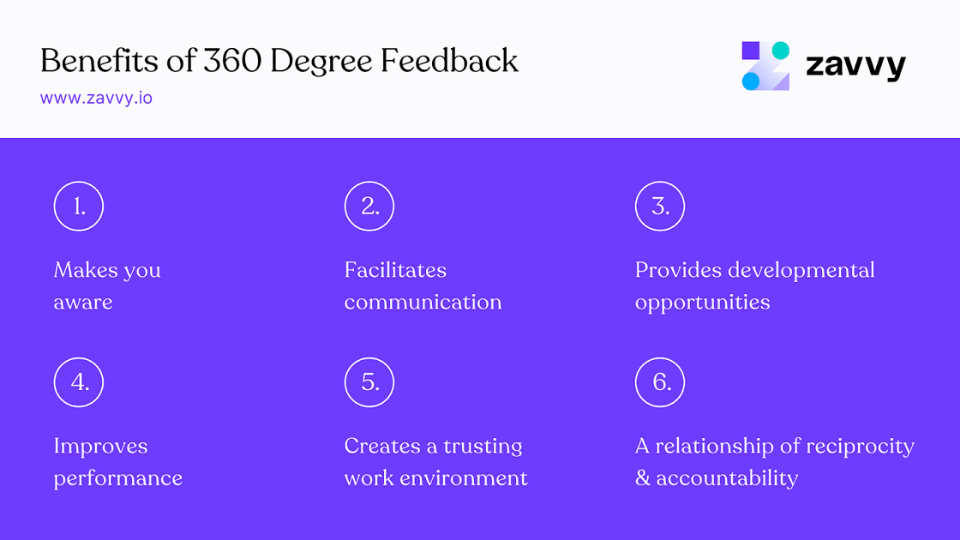
How would an employee know they are doing well without feedback?
And how would a leader understand employee challenges if they don't ask for feedback?
Apart from sharing valuable information between the parties, fostering a feedback culture in your company will make employees feel valued and respected.
But giving feedback might not be as straightforward as you'd think. It's not enough to highlight what an employee is doing right or wrong.
➡️ This is why we have compiled a list of 20 best practices for employee feedback to create an engaging workplace culture.
➡️ Want some additional inspiration? Discover 35 positive employee feedback phrases to inspire your next 1:1.
➡️ Still torn on how to deal with high performers? Have a look at 36 examples of constructive feedback for high performers.
Receiving feedback from employees is vital to employee retention:
Employees want to feel respected and valued by listening to and acting on their feedback. You will build trust and engagement when leaders and organizational managers listen to employee feedback.
Suppose one employee is experiencing specific pain points of frustration. In that case, there is a high probability that other employees may also share the same pain points and frustrations.
Tip: Collecting honest employee feedback and conducting exit interviews can identify employee pain points and create plans and strategies to resolve them.
Tip: Conduct recurring pulse surveys to stay in sync with employee sentiments.
Most employees entering a new company will take time to settle in and learn the company's workings.
Tip: Mitigate new starts with a buddy system, allowing a recruit to be taken under the wing of an established employee and learn the ropes of the company.
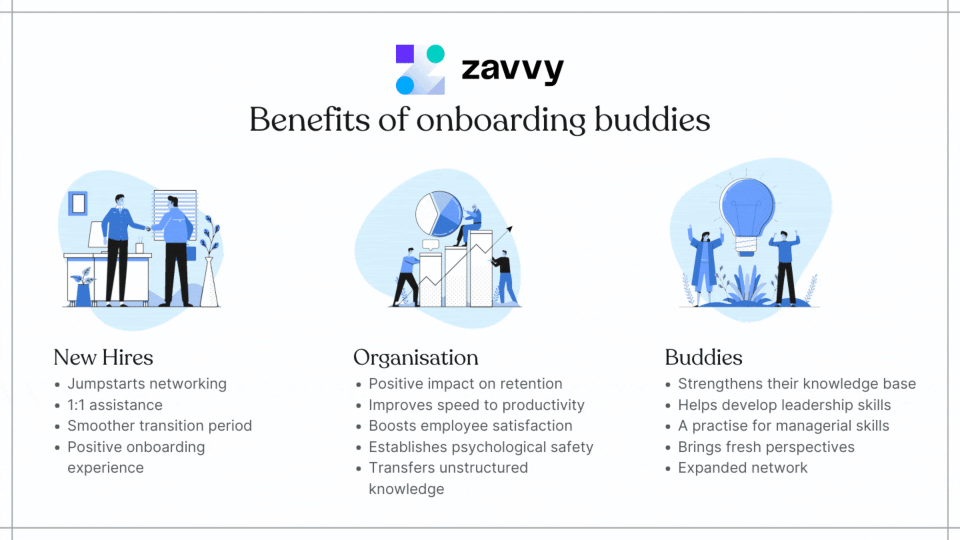
Employees should not feel that they are outcasts in a company but should feel they belong and are part of the team. This way, they will feel valued and an integral part of the team.
Tip: Develop an employee engagement action plan so each company member will feel more dedicated to working toward the company's goals.
Communication and regularly connecting with your team are vital to keeping everyone on the same path with the same goals and vision. If team members do not connect often, a disconnect can form, a lack of synergy can develop, and then team members can feel isolated from the company's big-picture.
Tip: Ensure that employees spend time getting to know each other. It’s not only good for their wellbeing, but it also helps them build trust and work better together,
➡️ Explore our connection program templates gallery. You'll access real Zavvy journeys that we use on a weely basis.
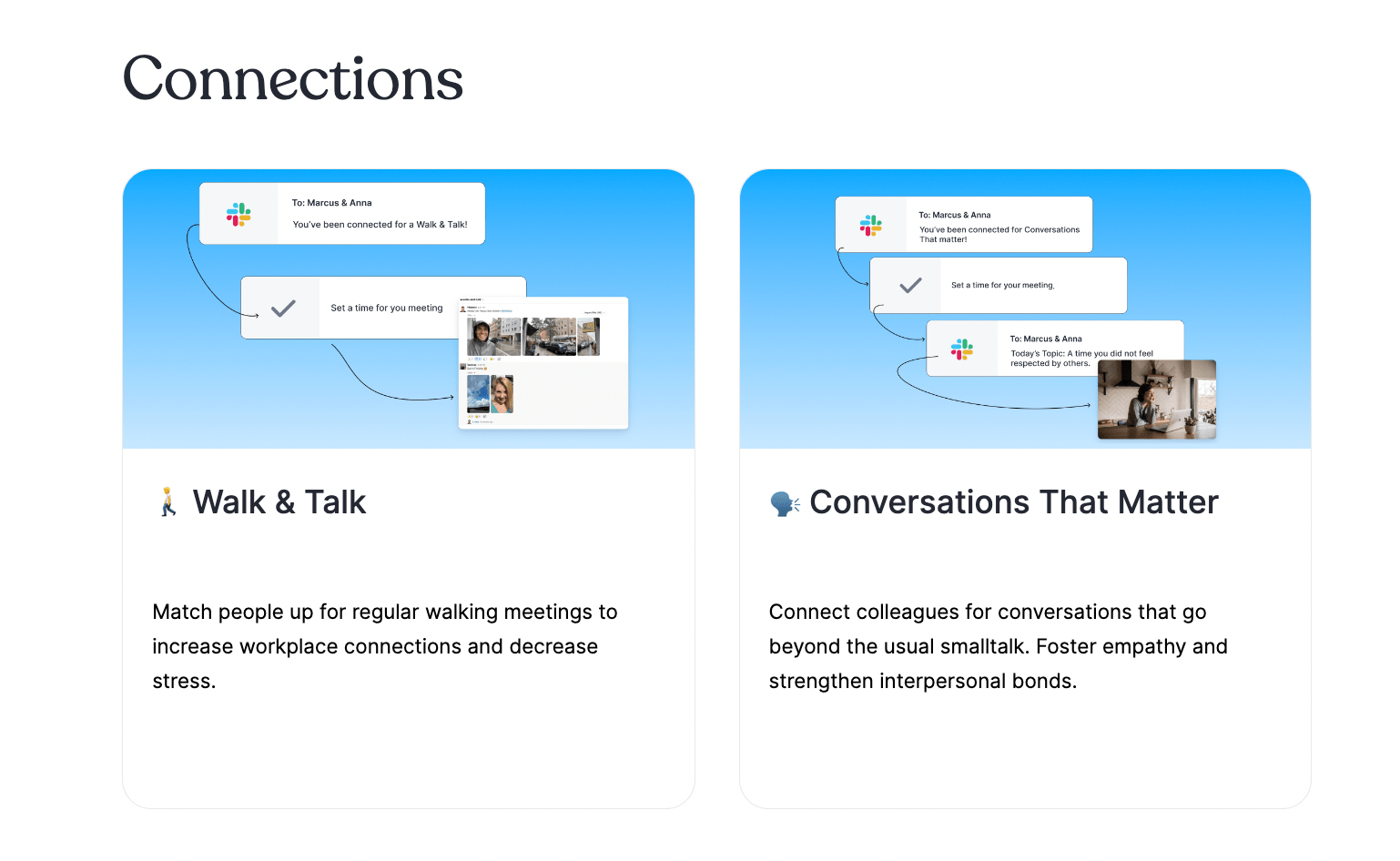
In one study, approximately 76% of employees stated that a diverse workforce is important when evaluating job opportunities. All employees want to feel included in the work environment, and diversity can bring different perspectives and ideas to the workforce.
➡️ Check out 32 ways to promote diversity, equity and inclusion (DEI) in your workplace.
With remote working surging in the last few years, remote work is still a large part of many teams' working environments. Employees not coming into the office can start to feel disengaged and disconnected from one another and work.
Employees can still connect and feel included and part of a team with virtual team-building activities.
➡️ Get inspired by 25 Virtual Wellness ideas for remote employees.
Employee retention is vitally important for a business wanting to stay on the cutting edge.
The cost of recruiting and training new employees can be high, and the impact of turnover on morale and productivity can be devastating.
While there is no magic formula for retaining employees, some best practices can help.
By following these best practices, organizations can create an environment where employees feel valued and supported and are more likely to stay with the company.
Are you looking to take your employee retention to the next level?
Use Zavvy today to develop and retain your company's best employees!
Book a free 30 minutes demo.
Upskill your team every week with the best contents and personalized recommendations.

Are you seeing an increase in the number of employees quitting?
If so, you're not alone.
In fact, employee turnover is at an all-time high. As a result, companies spend considerable resources on hiring the best talent but often struggle to retain them.
Why? Because they don't have the right employee retention strategy in place.
The good news is that there are things you can do to prevent your employees from leaving.
In this article, we'll share the top employee retention best practices that you can use to keep your best talent.
Get a demo!
We'll be happy to show you around and answer all your questions.
Trusted by innovative companies



We'll be happy to show you around, answer your questions, or arrange a free trial.
Erhalten Sie eine kostenlose Demo unserer Onboarding-Software.
Vertraut von



Your Training & Development Strategy - Solved in 1 Tool.
Trusted by innovative companies



We'll be happy to show you around, answer your questions, or arrange a free trial.
Learn how Zavvy helps you drive performance, development, and engagement.
Trusted by innovative companies



We'll be happy to show you around, answer your questions, or arrange a free trial.
We'll be happy to show you around and answer all your questions.
Trusted by innovative companies



We'll be happy to show you around, answer your questions, or arrange a free trial.
Gerne zeigen wir Ihnen ganz unverbindlich unsere Plattform im Detail.
Vertraut von modernen Unternehmen



Get a demo!
We'll be happy to show you around and answer all your questions.
Trusted by innovative companies



We'll be happy to show you around, answer your questions, or arrange a free trial.
Erhalten Sie eine kostenlose Demo unserer Software für Mitarbeiterenwicklung und Training.
Moderne Unternehmen
setzen auf Zavvy


